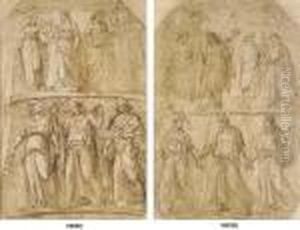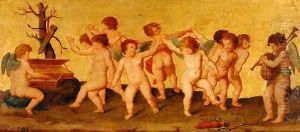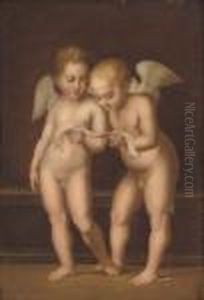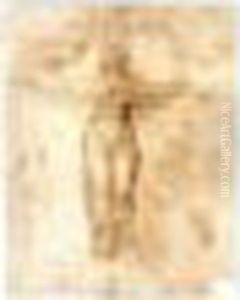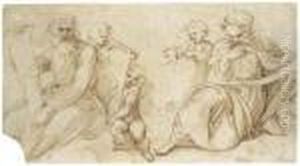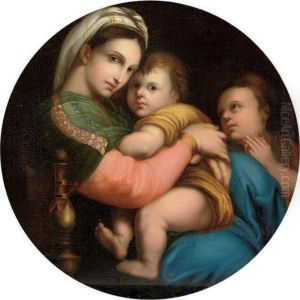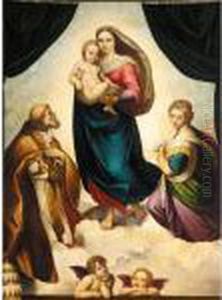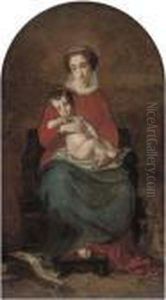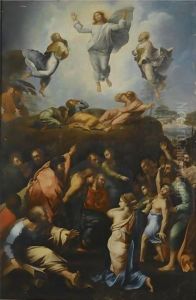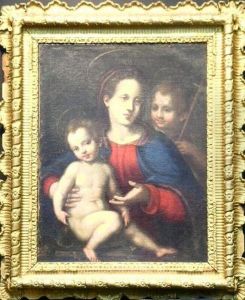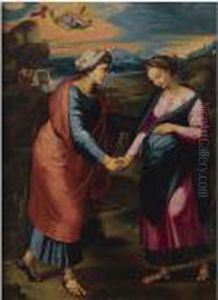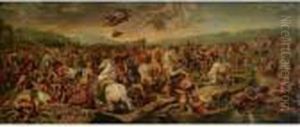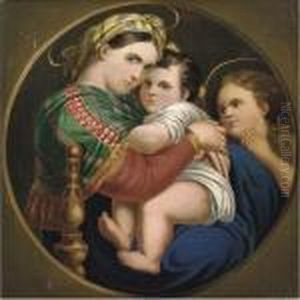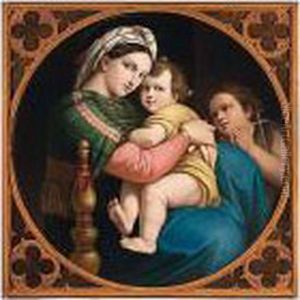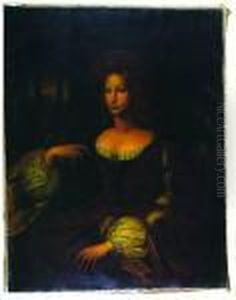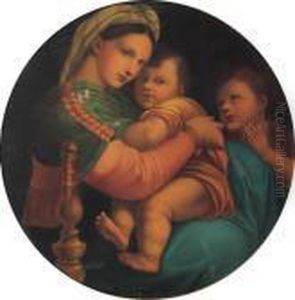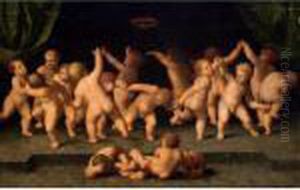





Putti Dancing Between Draped Green Curtains
-
About Reproduction
Discover the allure of art with our faithful reproduction of "Putti Dancing Between Draped Green Curtains", originally brought to life by the talented Raphael (Raffaello Sanzio of Urbino). Unlike posters or prints, our hand-painted oil painting breathes an unique sense of depth and texture into your space. Every detail, every stroke, and every texture is meticulously recreated, paying the perfect homage to Raphael (Raffaello Sanzio of Urbino) and his artistic vision.
Owning this piece is more than just decoration - it's a statement of your refined taste in art. Let the vibrant colors and intricate details of this replica serve as a daily reminder of the beauty in our world. Elevate your decor and appreciate the richness of art with our replica of this masterpiece.
-
Painting Description
"Putti Dancing Between Draped Green Curtains" is a fresco attributed to the Italian High Renaissance master Raphael (Raffaello Sanzio of Urbino, 1483–1520). This artwork is part of a larger decorative scheme that Raphael and his workshop executed in the Vatican, specifically within the rooms known as the Raphael Rooms. The putti, or cherubic figures, depicted in the fresco are a common motif in Renaissance art, symbolizing love and the presence of the divine.
The fresco showcases a group of putti playfully dancing in a carefree manner, set against a backdrop of luxurious green drapery. The use of vibrant colors and the dynamic movement of the figures reflect Raphael's mastery of composition and his ability to convey the joyousness of the scene. The drapery adds a sense of depth and frames the putti, drawing the viewer's attention to their animated dance.
Raphael's work on the Vatican frescoes was commissioned by Pope Julius II and continued under Pope Leo X, with the putti being part of the decorative elements that complement the main theological and philosophical themes of the rooms. While the exact date of "Putti Dancing Between Draped Green Curtains" is not definitively established, it is generally believed to have been painted during Raphael's time working in the Vatican, between 1509 and 1520.
The fresco is a testament to Raphael's skill in creating figures that are both idealized and imbued with a sense of life and movement. It also exemplifies the Renaissance fascination with classical antiquity, as putti are derived from ancient Roman art where they were often associated with the god Cupid and the concept of amorini, or little loves.
As with many of Raphael's works, the fresco has been studied extensively by art historians and is considered an important example of Renaissance art. It continues to be admired for its beauty, its technical excellence, and its representation of the playful and joyous aspects of human experience as interpreted through the lens of High Renaissance aesthetics.
-
Lead Time & Shipping
When you order this oil painting replica, it typically takes 2-3 weeks to paint. If the artwork is more complex, it might need a little more time to ensure the best quality. Once it's ready, we'll send you a photo for your approval. After you give the green light, we'll ship it to you for free.
-
Return & Refund
We believe in the quality of our hand-painted oil painting reproductions, and your satisfaction is our priority. If for any reason, you are not completely satisfied with your purchase, we offer a 45-day return policy. You can return your artwork within 45 days of receipt and receive a full refund. Please note that the artwork must be returned in the original packaging and in the same condition as it was received.





